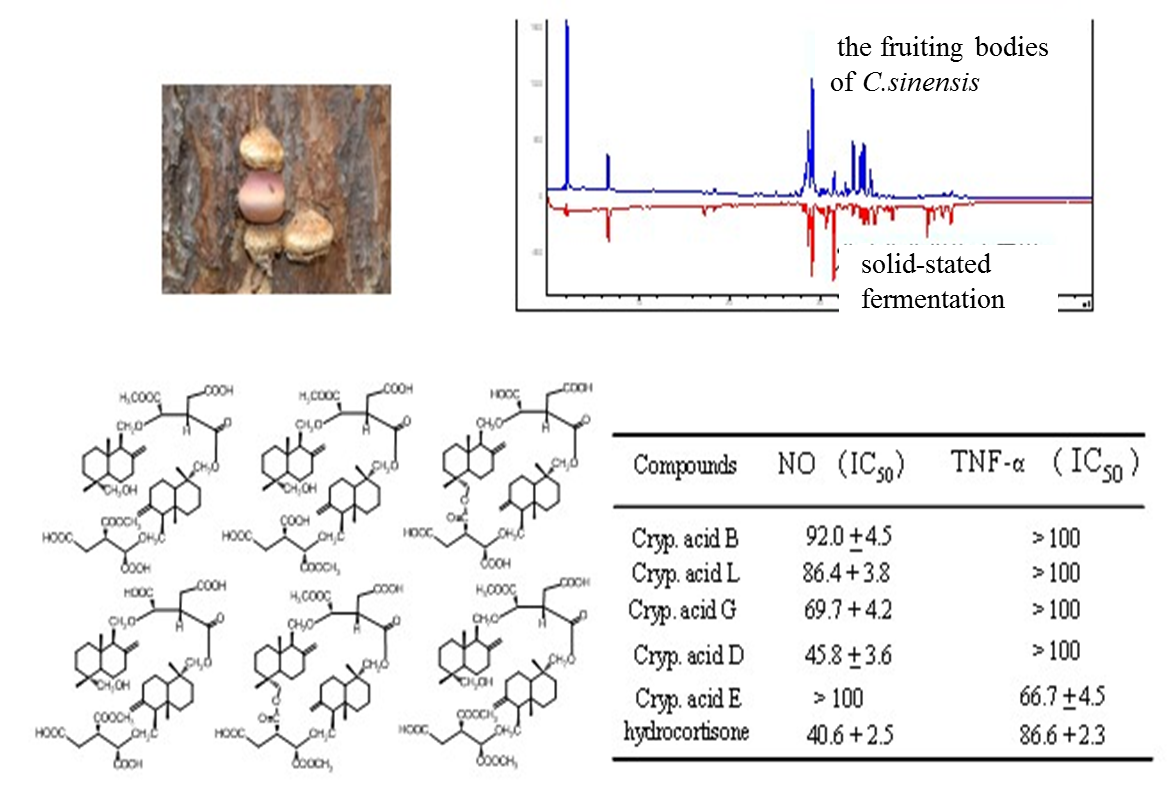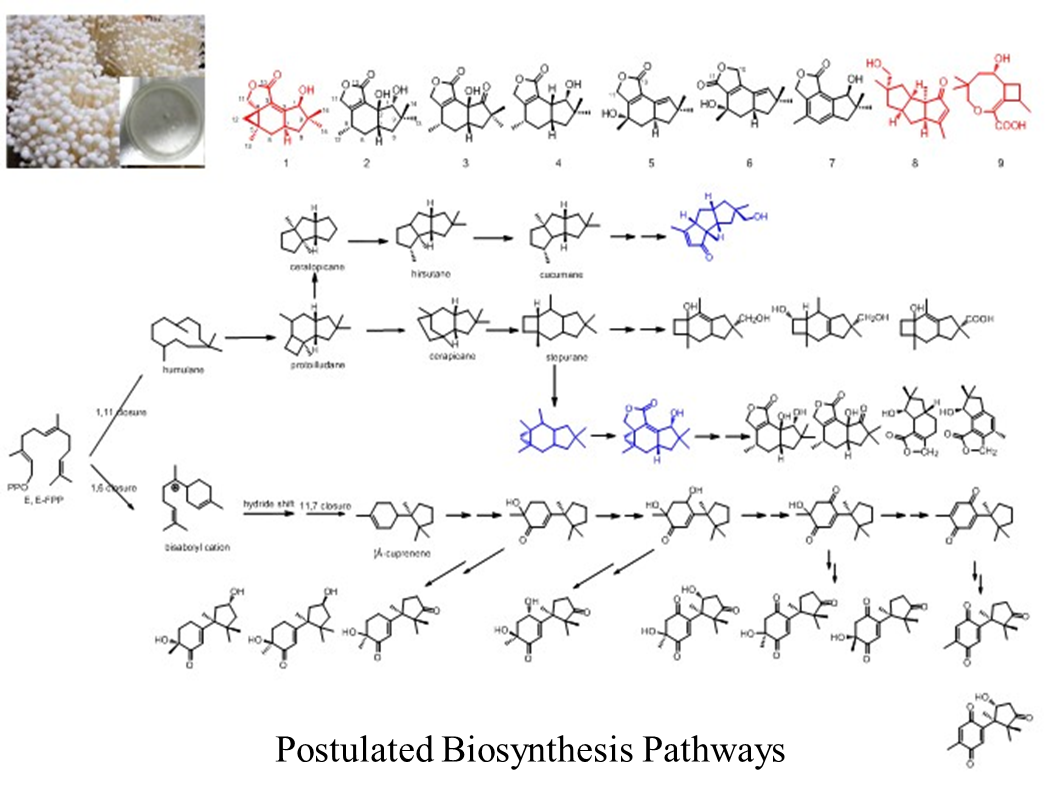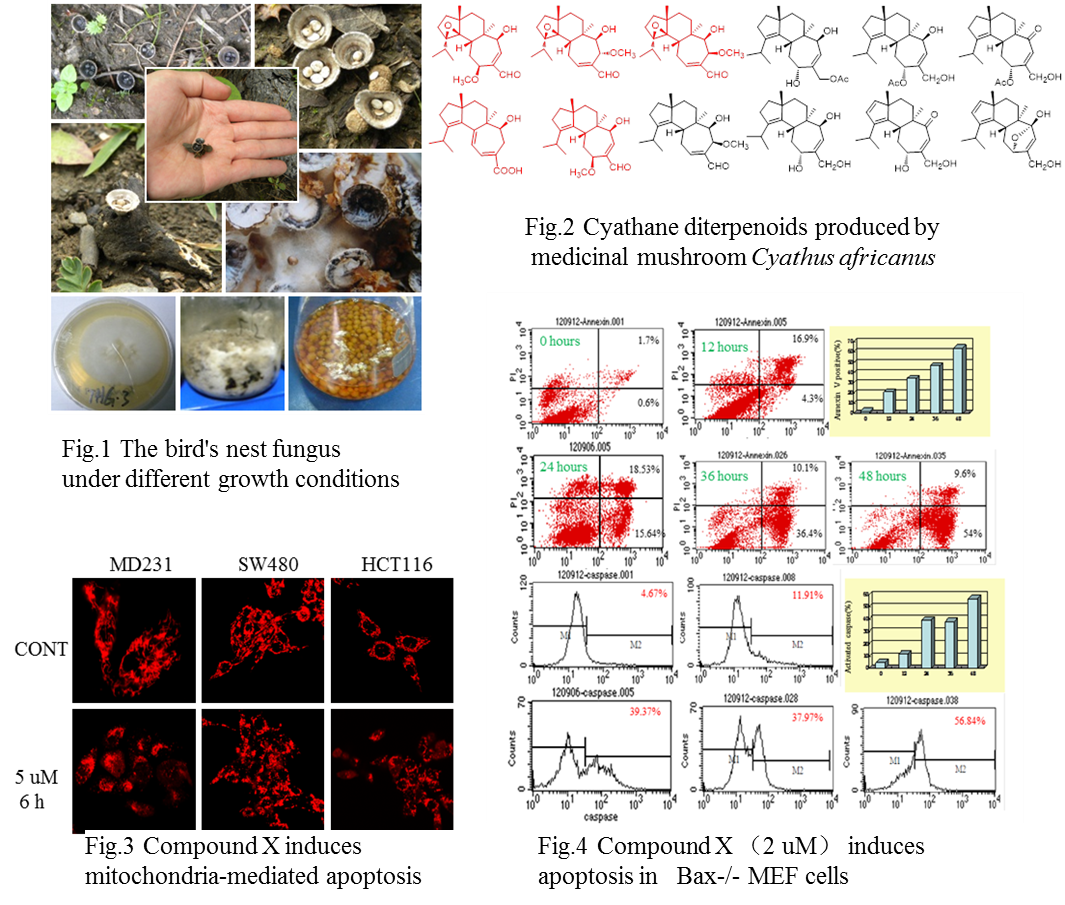Research interests
Our current research projects focus on high-valuable utilizing of rare edible and medicinal fungi:
(1) Collect rare edible and medicinal fungi systematically to establish resource library. The strains of edible and medicinal fungi are grown in solid-state culture medium, with the reference of the fermentation of red yeast rice. Then screen target strains with indexes of biological activities and chemical fingerprints.
(2) Extract, isolate, structure elucidate, and activity evaluate of bioactive secondary metabolites from fermentation products of rare edible and medicinal fungi, which can provides lead compounds for innovative medicines.
(3) Explore the pharmacodynamics foundation and mechanisms of action about the traditional edible and medicinal fungi, combining chemistry with pharmacology closely.
Research Results
1)Studies on the biological ametabolites from traditional medicinal fungi Cryptoporus sinensis
The fruiting bodies of C. sinensis have been used for the treatment of asthma and bronchitis in China as a herbal medicine for a long time. In our previous phytochemical investigations on C. sinensis, four new drimane-type sesquiterpenoid ethers of isocitric acid, named cryptoporic acids J – M, together with the six known cryptoporic acids, which showed nitric oxide production inhibition in macrophages, were isolated. Cryptoporic acid derivatives are unusual in structure; namely, they are drimane-type sesquiterpenoid linked to an isocitric acid moiety viaan ether bond. Cryptoporic acids also exhibited interesting biological activities, such as strong superoxide-release inhibition and antitumor-promotion activity. To search for further new cryptoporic acid derivatives from this fungus, we re-examined the fruiting bodies of C. sinensis, which led to the isolation of the two new cryptoporic acid derivatives. ( Chemistry & Biodiversity,2011,8, 1529-1538)

2)Chemical investigation on the solid culture of Flammulina velutipes
Flammulina velutipes, belonging to the family Tricolomataceae (Hymenomycetes, Basidiomycota), is a fresh edible mushroom frequently consumed in China and Japan. Chemical studies of F. velutipes have led to the discovery of a variety of new bioactive terpene-related metabolites with different structural features, and the postulation of possible biosynthetic pathways and biogenic relationships for some of the metabolites. Our research on F. velutipes demonstrates that the cultivation of edible mushroom with cooked rice is a useful method to produce good functional food and bioactive metabolites. (Food Chemistry,2012,132, 1346-1353;Tetrahedron, 2012, 68, 3012-3018;Fitoterapia, 2012,83, 209-214) .

3)Studies on the biological ametabolites from medicinal fungi (the bird's nest fungus)
Bird's nest fungi are a small group of saprophytic fungi that have an unique way of reproducing. They belong to the family Agaricaceae with three genera Nidula, Cyathus and Crucibulum. They have been known as a fascinating group of fungi not only for their special appearance but also their potential of producing a group of diterpenoids with unique skeleton. The genus Cyathus is known for production of cyathins, a class of diterpenoids with a unique [5-6-7] tricyclic ring skeleton and showing anti-inflammatory activity and antibiotic activity. In our searching for cytotoxic natural products from the medicinal mushroom, the EtOAc extract of the solid culture of the fungus C. africanus showed NO inhibition and cytotoxicity against Hela cell line in vitro. Chemical investigation on the organic extract led to the isolation of eight secondary metabolites including five new cyathane diterpenoids named cyathins D-H. The part results of our research have been published in Fitoterapia (2013,84, 22-31).




